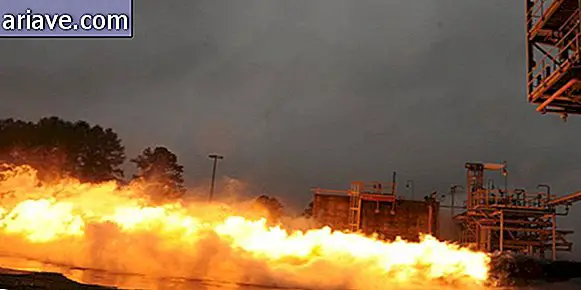NASA puts 60s rocket engine to work again
In an attempt to find the most efficient and economically viable way to send astronauts off Earth, NASA has assigned a team of young engineers to take a look at what has been developed in the past.
In the process, the group of researchers had the opportunity to dismantle an F-1 rocket engine, which, though from the 1960s, remains the most powerful propellant of the US-made genre. Five units of this engine model were responsible for driving the Saturn V rocket into space during the Apollo space program.
After analyzing its components, the engineers redesigned the F-1 and put it to work at the Marshall Space Flight Center in Huntsville, Alabama, for 30 seconds - as you can see in the video above.
A gentleman with boy strength
The engine uses a combination of liquid oxygen and refined kerosene to cause combustion, which in turn generates the gases and force required to lift hundreds of tons of rockets.

In the experiment conducted last Thursday (January 24), the researchers were able to reproduce an initial thrust of 31, 000 kilograms. However, the F-1 is theoretically capable of generating much more energy, as 1.5 million pounds of this same parameter were recorded during official missions.
The data collected during this test will help the space agency's team of scientists develop new and advanced propellants that will power future NASA Space Launch System rockets.











